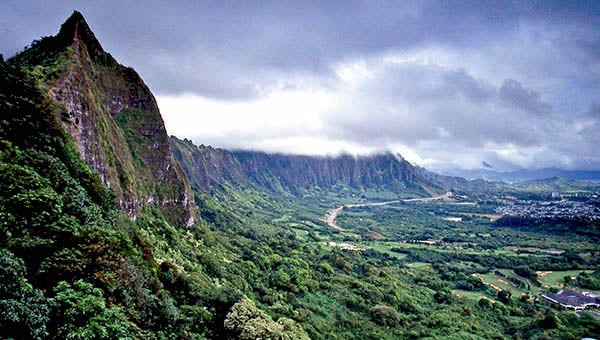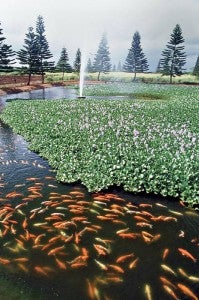Pali, pineapple and gliders
Published 1:10 pm Saturday, February 27, 2016
I’m heading for the interstate. Yes, Hawaii has interstates, in spite of the fact that they do not connect states. When Hawaii became a state in 1959, it became eligible for highway funds. The United States has a large military presence in the state (mostly on Oahu) and rapid troop and materials movement is required.
H1 starts just north of Waikiki and goes to Pearl Harbor. Yes, morning and evening rush hour is just like on the continent, stop and go, with the usual allotment of fender benders. H1 also has an interesting feature. The center of the highway is a movable concrete barrier, a very large machine moves the barrier each weekday to provide an extra lane from Waikiki to Pearl. During the day, crews move the barrier onto the other side to provide an extra lane for traffic toward Waikiki. That part seems to work well, but there are still traffic slowdowns and stoppages each day in each direction.
I’m headed to the Pali (cliffs) Highway. It’s a modern road that connects Honolulu with the north shore, primarily Kaneohe and Kailua. It generally follows a very old pack mule trail for goods from Honolulu to points north. It’s a long trip otherwise, around the eastern mountains.
At the upper portion of the road, a tunnel has been cut through the mountain top to provide more rapid access for vehicles. Where the tunnel starts, a side/access road has been built for vehicles to visit a wonderful overlook at the top. An old road section has been left for hikers and sightseers. During midday hours, a constant stream of tour busses flow through the parking area.
The overlook has been designed with the visitor in mind. It’s about 1200 feet altitude and it’s always windy and cold up here, even at summers height. Wide pedestrian balconies accommodate lots of tourists, like me.
This mountain range is actually the wall of an extinct volcano that split in half. The half not visible is in the Pacific ocean. A panoramic view of the windward side of Oahu is thrilling, especially on a clear day. Most days a cloud bank develops against the tops of the mountains, cooled by uplifting winds.
In 1931, a glider pilot, attracted by the constant winds, set a new endurance record for powerless flight. William Cocke stayed aloft for 21 hours and 34 minutes. His feat was well recorded, with illumination provided by the military. A plaque honoring the event is on site.
 Today, glider flights originate from several airports on Oahu. I’m headed for Dillingham Field, at the end of the Farrington Highway. It’s a popular airport with the soaring crowd.
Today, glider flights originate from several airports on Oahu. I’m headed for Dillingham Field, at the end of the Farrington Highway. It’s a popular airport with the soaring crowd.
The road really does end at Dillingham. I’m sure 4-wheel enthusiasts have continued around the far point of land, but for me, the barrier is the end. I take the airport access road to the left. The day is bright with the usual trade winds. Gliders, tow planes and a gathering of spectators make for excitement; I get to visit these powerless machines at my leisure and chat with spectators and participants. Bright colors against rough mountains and blue sky is wonderful.
I record the operations with my camera, climb into my car and head back to Waikiki. I have another planned stop along the way; pineapples are calling my name.
The Dole Plantation Visitors Center hosts over a million guests annually. The ample parking lot is mostly empty today. It is not full tourist season yet. I can walk about at my leisure, take all the photos I want, and read as much as my time will permit.
James Dole founded the company, now known as Dole Foods, in 1899. He was well educated and researched which plants would best grow in this central valley. He chose the pineapple. Business was slow until a mechanized processor was developed in 1913. His business suddenly boomed and land holdings were expanded to other islands, some 20,000 acres on Lanai alone, devoted to pineapples.
I have always associated the pineapple with Hawaii. I’m surprised to learn that it is actually indigenous to central and south America. It was introduced to Europe via Columbus and the Spanish established plantations in the Philippine Islands. The commercially produced variety of today is a long way from the native.
Years of plant breeding has produced a bromeliad that is more marketable, has a better shape for machine processing, and can withstand the rigors of shipping. Still, today, the preferred method of transportation is by air for freshness in the tourist trade.
I’m especially interested in the evolution of pineapple shapes.
It’s a good day; my camera and spirit is full of Oahu. I head for my temporary Waikiki home.
JAMES D. “ARCHIE” HOWELL is a Southampton County native and 1955 graduate of Franklin High School. He can be reached at archiepix@kingwoodcable.com.








